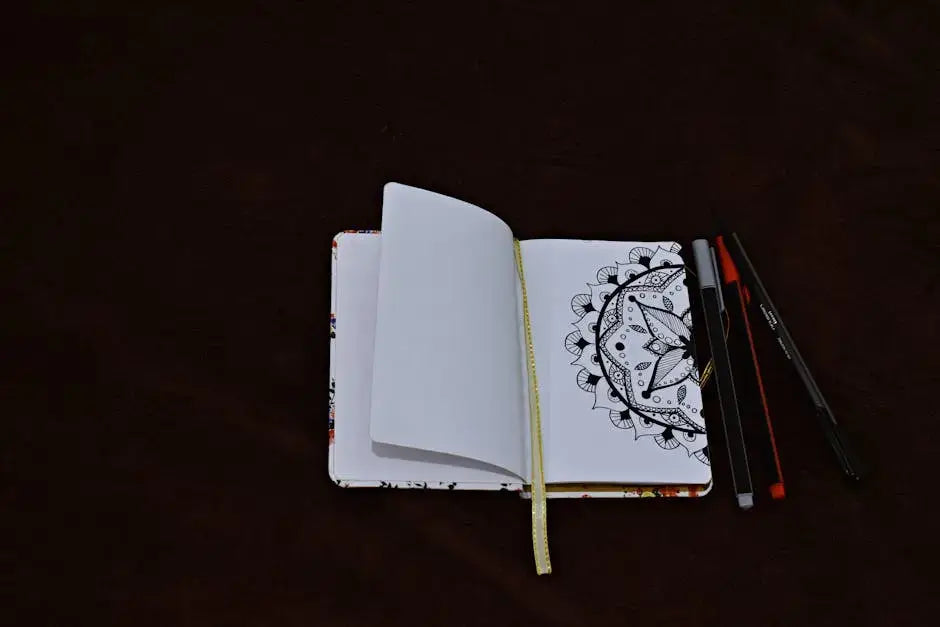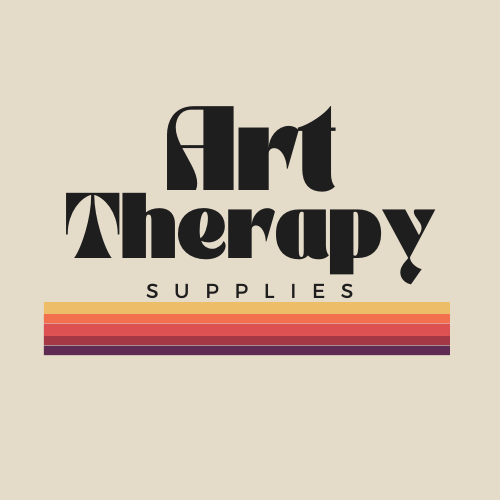Art therapy is a powerful and inclusive approach that extends beyond professionals; it’s an accessible and personal way for anyone to explore their creativity and process their emotions. Engaging with art therapy practice using an A6 spiral notebook offers a portable and versatile medium that encourages spontaneous expression and reflection. Its compact size makes it ideal for capturing fleeting thoughts, experimenting with different techniques, and creating a personal visual journal wherever you are. In this blog, we’ll explore various creative ways to leverage your A6 spiral notebook for art therapy, providing you with simple yet meaningful tactics to deepen your artistic journey and foster emotional well-being.

The Benefits of Art Therapy
Participating in art therapy offers numerous mental health benefits, including stress reduction, emotional expression, and increased self-awareness. Creative activities activate different parts of the brain, helping to process complex feelings and facilitate healing. In a world filled with constant distractions and societal pressures, carving out time for artistic self-expression creates a sanctuary—a dedicated space for introspection and emotional release. This practice can lead to improved mood, greater resilience, and a deeper understanding of oneself.
Importantly, art therapy is not reserved for those with artistic talent. It’s an open invitation for everyone to explore their inner landscape through creative means. Even if you consider yourself unartistic, the act of creating—whether through doodles, notes, or abstract images—can foster a sense of accomplishment and personal growth. Engaging regularly with your art therapy practice can help you develop a healthier relationship with your emotions and cultivate a mindful, compassionate attitude toward yourself.
Furthermore, making art in this context acts as a form of self-care. It encourages moments of reflection, providing a safe outlet for emotional processing. Your A6 spiral notebook becomes a trusted companion in this ongoing journey of self-discovery, capturing your evolving thoughts, feelings, and insights over time. This ongoing record can reveal patterns, growth, and areas needing attention, making it a valuable tool for emotional resilience and clarity.
Why Choose an A6 Spiral Notebook?
The A6 spiral notebook’s portability makes it a practical choice for spontaneous art therapy sessions, whether you’re outdoors, commuting, or relaxing at home. Its size encourages a focus on exploration rather than perfection, reducing the pressure often associated with larger canvases. This makes it especially suited for quick sketches, doodles, or expressive notes that serve as an integral part of your art therapy practice.
The spiral binding is more than just a structural feature; it enhances usability by allowing the notebook to lie flat, making it easier to draw or write across the entire page. This design facilitates a seamless creative flow and makes revisiting previous pages effortless, supporting ongoing reflection and growth. The ability to easily flip through your past creations fosters a sense of continuity and progress in your artistic and emotional development.
The small size of the A6 format also helps diminish any intimidation associated with complex or large-scale projects. It invites quick, spontaneous acts of creativity—doodles, notes, experiments—without the fear of making mistakes. This playful approach nurtures a relaxed, non-judgmental environment, encouraging you to explore different techniques and ideas freely, which is essential for a fulfilling art therapy practice.
Journaling: Keeping Tabs on Your Feelings
Integrating journaling into your art therapy routine enhances emotional awareness and provides a structured way to track your personal growth. Use your A6 spiral notebook to reflect on daily experiences, emotions, or significant events, pairing written insights with visual representations like doodles or sketches that embody your feelings. This combination of words and images can deepen your understanding of your emotional landscape and reveal underlying patterns or triggers.
Start each entry with a date and an emotional check-in, describing how you feel at that moment. Feel free to add colors or visual symbols that resonate with your mood, creating a multisensory record of your inner world. Over time, this practice can illuminate shifts in your emotional state, helping you recognize progress and areas for further exploration.
Journaling in your art therapy practice isn’t limited to documenting life events; it’s also a space for dreams, hopes, and spontaneous ideas. Your A6 notebook can become a repository for fleeting thoughts or creative sparks, which may later evolve into more developed artworks. This ongoing collection of personal insights and visual cues supports a holistic approach to emotional well-being and self-expression.
Creating Visual Mood Boards
Utilize your A6 notebook to craft mood boards that visually represent your current emotional state, aspirations, or sources of inspiration. By cutting out images, quotes, or colors that resonate with you, you can create a tangible collage that acts as a visual language for your feelings and goals. This process not only stimulates creativity but also provides a therapeutic outlet for exploring and understanding your inner world.
Organize your mood boards by themes or specific emotions—such as calmness, excitement, or introspection—to identify patterns and gain insights into your emotional landscape. For example, a page dedicated to ‘calm’ might feature serene images, soft colors, and peaceful quotes, while another for ‘energy’ could include vibrant visuals and dynamic patterns. Reflecting on these visual cues can help you recognize what nurtures your well-being and what triggers certain emotional responses.
As you fill your A6 spiral notebook with mood boards, you’ll create a personalized visual journal that serves as both a source of inspiration and a therapeutic tool. Handling different materials like magazine clippings, stickers, or drawings adds a tactile dimension that can be emotionally uplifting. Over time, these mood boards become a visual map of your emotional journey, reminding you of your strengths and guiding your self-care practices.
Doodle Away: Stress Relief Through Drawing
Doodling is a simple yet profoundly meditative activity that can significantly reduce stress. Use your A6 notebook to create free-form sketches, abstract designs, or repetitive patterns, allowing your subconscious to guide your hand. This spontaneous drawing process fosters a sense of flow and helps quiet the mind, making it an effective stress management tool.
Explore various forms of doodling, from intricate mandalas and geometric patterns to playful cartoons or abstract shapes. The key is to approach it without judgment or expectation, focusing instead on the act of creation. Over time, you may develop a unique doodling style that reflects your personality and emotional state, enriching your art therapy practice.
In moments of tension or anxiety, dedicating a few minutes to doodle can redirect your focus and promote calmness. The tactile experience of moving your pen across the pages of your A6 notebook can serve as a grounding ritual, helping you process feelings and regain emotional balance. Making doodling a regular habit encourages resilience and a healthier way to cope with life’s uncertainties.
Exploring Color: The Therapeutic Power of Painting
Color plays a vital role in expressing and regulating emotions. Experimenting with watercolor, colored pencils, or markers in your A6 notebook allows you to translate feelings into vibrant hues, providing a cathartic and uplifting experience. The act of applying color can evoke mood shifts, deepen self-awareness, and serve as a visual language for your emotional states.
Select colors intentionally based on your current mood—calming blues for serenity, energizing reds or yellows for excitement, or muted earth tones for grounding. This mindful color selection enhances your connection to your inner world and enriches your art therapy sessions. As you blend colors and explore different techniques, you may uncover new emotional insights and creative possibilities.
Approach each coloring or painting session with curiosity, allowing yourself to experiment freely. The tactile engagement of handling different coloring tools and the visual impact of your creations can be deeply satisfying and emotionally healing. Over time, your colorful explorations in the A6 spiral notebook will become a vibrant record of your emotional evolution and a source of inspiration during challenging times.
Mindfulness and Meditation Techniques
Incorporate mindfulness into your art therapy practice by focusing your attention fully on the act of creating. Use your notebook to practice breathing exercises alongside drawing or painting, cultivating present-moment awareness. This mindful approach transforms your artistic sessions into meditative experiences that reduce stress and foster inner calm.
Begin each session with a few deep breaths, visualizing inhaling positive energy and exhaling tension. As you draw or color, maintain a gentle focus on the sensations—the texture of your materials, the flow of your hand, the colors blending. This attentiveness encourages a state of mindfulness, helping you detach from worries and cultivate a sense of peace.
Further enhance your practice by writing positive affirmations or intentions in your A6 spiral notebook. Visualize these affirmations as you create, embedding them into your artwork. This combination of mindfulness and art therapy practice can empower you to manifest positive change, reinforce self-compassion, and deepen your connection with your emotional landscape.
Embrace Your Artistic Journey
Your A6 spiral notebook is more than just a collection of pages; it’s a personal sanctuary for your thoughts, feelings, and creative exploration. By integrating these creative art therapy techniques—doodling, journaling, mood boards, and color experiments—you cultivate a meaningful relationship with yourself. This ongoing process not only nurtures emotional resilience but also fosters a sense of curiosity, growth, and self-compassion.
Remember that every mark you make contributes to your self-discovery. Whether you’re sketching, writing, collaging, or experimenting with colors, each activity is a step on your unique artistic journey. Your notebook becomes a mirror reflecting your inner world, offering insights and inspiration along the way. So, pick up your A6 spiral notebook today, and begin exploring the transformative power of your own creativity in your art therapy practice.

